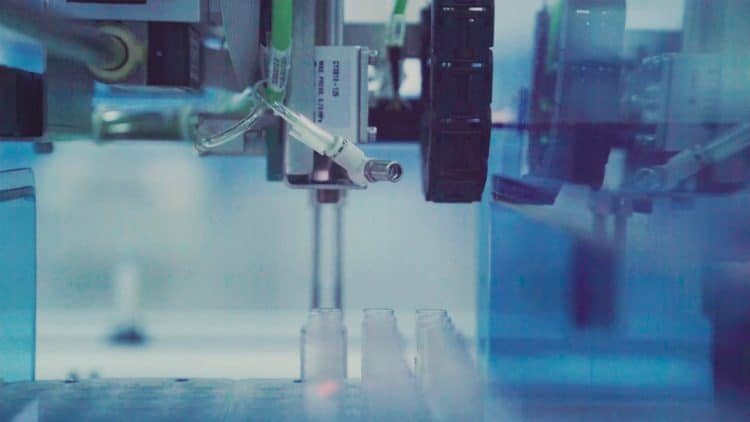Column chromatography is a common technique used in laboratories to separate substances and mixtures. Its popularity dates back to the 1930s. [1] Unfortunately, column chromatography as is typically practiced today, is not exactly friendly towards the environment.
A Basic Overview of Column Chromatography
Column chromatography employs a glass column and solvents. The material to be purified is exposed to solvents (mobile phase) in the column and passes through the tube, which is filled with absorbent material (stationary phase). As result of different motility towards the bottom of the packed column and different compounds affinity with the two phases, the mixture separate into its individual components and each one can be collected separately.
This technique is widely used in analytical laboratories and as purification method during production processes. Depending on the kind of separation principle employed in the technique it is possible to have ion exchange, gel filtration, affinity chromatography among others.
Dangerous Solvents
The procedure often employs a mixture of solvents that are dangerous to human health and the environment. Common chromatographyc solvents include ether, ethyl acetate, hexane, pentane, methanol, dichloromethane etc.
Solvent disposal after performing column chromatography should be handled carefully and according to regulation in order to minimized risks associated with air and water pollution and to preserve the environment.
Greener Column Chromatography
One of the principal ways to have a greener chromatography is to limit the use of hazardous solvents and replace hazardous chemicals with safer one. To make an example dichloromethane, an extremely toxic solvent, can be substituted with a mixture of the safer solvents such as heptane and isopropanol with good results.
If replacing solvents is not possible, recycling is another way to lessen their impact on the environment.[2] Doing so comes with its unique set of challenges, such as costs and time consuming procedures. However, the alternative to reducing column chromatography waste is much costlier in the long run.
References:
[1] L. S. Ettre et al. M. S. Tswett and the discovery of chromatography II: Completion of the development of chromatography, Chromatographia (1993); (1903–1910). , 35(5-6), 329–338. doi:10.1007/bf02277520 [Journal Impact Factor=2.044] [times cited = 74]
[2] Duan, Wen-Da, et al. Recovery and recycling of solvent of counter current chromatography: The sample isolation of zeaxanthin in the Lycium barbarum L. fruits. Journal of Separation Science. 2021; 44(3);759-766
Image: https://unsplash.com/photos/igSTmAWAW3s












